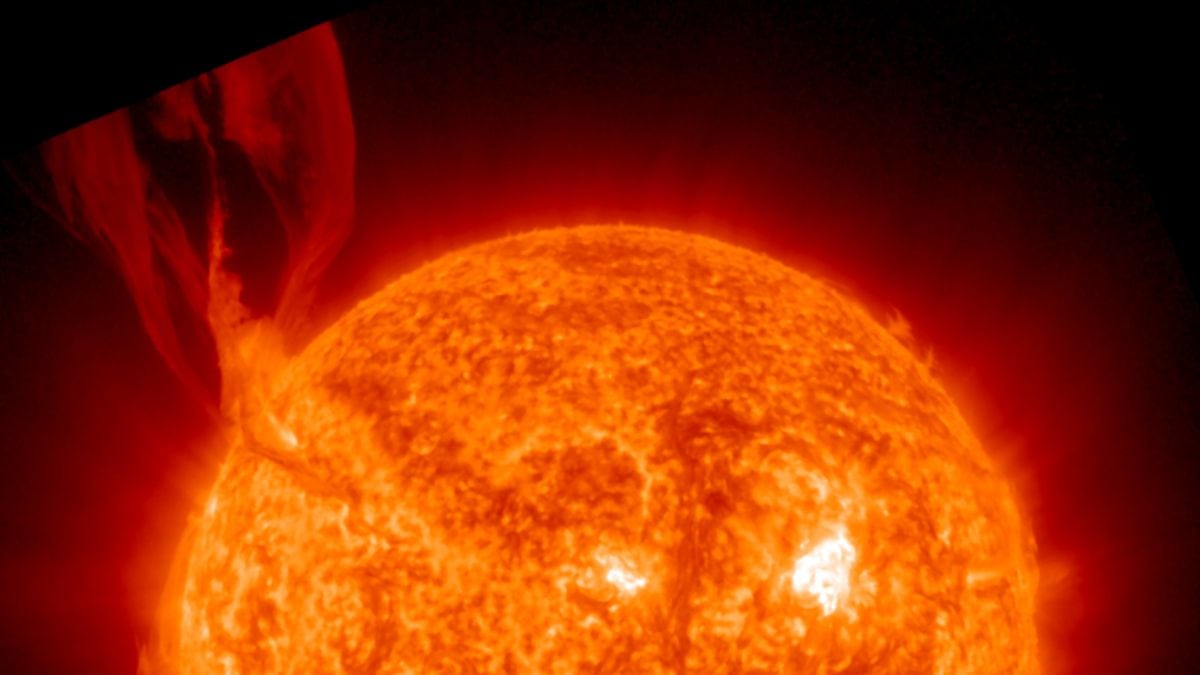
On July 15, a massive filament eruption from the sun’s northeastern limb exploded in an eye-popping explosion of solar filth and fury, and a bright chunk of it was blown half a million miles into space – a quarter the distance between the Earth and the moon. High-definition video of the event was captured by NASA’s Solar Dynamics Observatory (SDO), cutting out the atmosphere as the unstable filament destroyed itself. Ranks of towering walls of plasma, stretching more than 12,400 miles high and more than three times that wide, rose from the wreckage, giving rise to a spectacular “canyon of fire” that temporarily reconfigured part of the sun’s surface in a blaze of magnetic rearrangement.
Solar Filament Eruption Triggers CME but Misses Earth, NASA and SOHO Confirm
As per a report by Spaceweather.com, this glowing rift was the result of magnetic field lines violently snapping and realigning after the eruption, leaving behind a scorched trail of plasma. Such filaments, the NASA scientists said, are cooler, denser clouds of solar material that are tethered above the sun’s surface by magnetic forces. As these arrangements collapse, they create explosive bursts that sometimes become coronal mass ejections (CMEs), violent clouds of solar plasma that rocket out into space.
The July 15th event did, however, generate a CME, but early observations cut out the Earth. Images from the Solar and Heliospheric Observatory (SOHO) and the GOES-19 satellite indicated the eruption was not directed at Earth. “The front is moving quite slowly and is directed away from the Earth,” as noted by aurora observer Vincent Ledvina on social media, based on LASCO and CCOR-1 coronagraph imagery.
These filament eruptions are fundamental blocks in solar activity and forecasts of space weather. While the CME itself is unlikely to disturb Earth’s geomagnetic environment, eruptions like these can trigger auroras and interfere with satellite operations during solar storms.
The jaw-dropping video of the eruption provides a stunning example of how the star that powers all known space weather is dynamic and sometimes explosive, and a chance for us Earthly folk to get a look at the enormous forces the sun brings to bear on its skin. Scientists are watching these solar activities to be able to predict more accurately the consequences of such events on the solar system.



